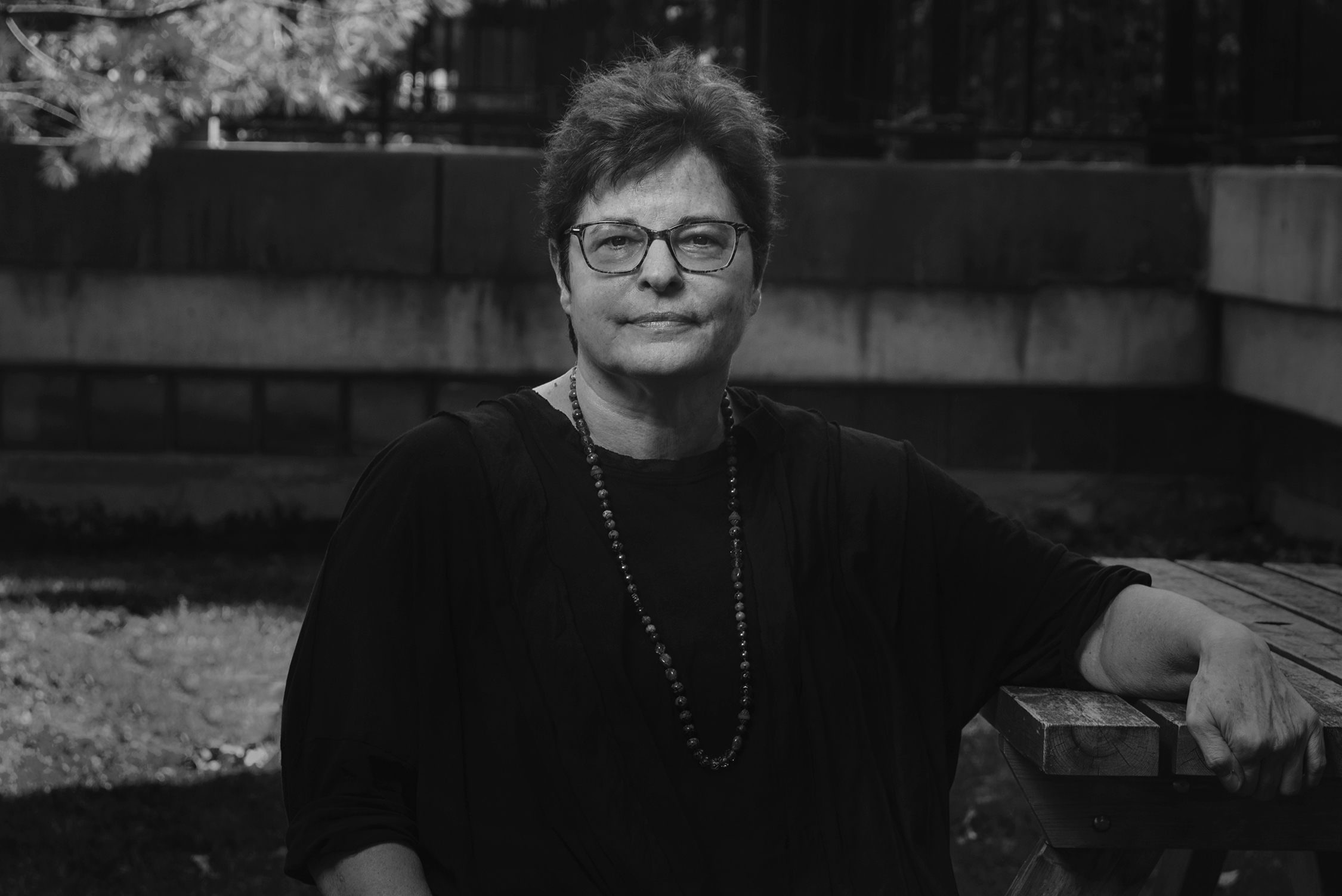By Mary Giles
Photos by Bryan Gagnon
The death of Justice Ruth Bader Ginsburg, a champion of equal rights and a “catalyst for change,” has left a vacant seat in the United States Supreme Court. Her understanding of the constitutional principles of equality has left a lasting legacy for gender discrimination laws in the U.S.
Melissa Haussman is a professor in the Department of Political Science whose research involves U.S. and North American comparative gendered politics, including women’s access to political power. Haussman says, “Ginsburg’s legacy was to make the ‘unseen and unacknowledged’ clear, as she so forcefully conveyed in her 1993 Senate nomination hearing. I fear I will never see as strong and passionate an advocate of women’s rights in my lifetime.”
The students in Haussman’s course on U.S. Politics are studying separation of powers, checks and balances, federalism and the Constitutional history of the U.S., including a case study on the Equal Rights Amendment (ERA). Haussman says the intent of the ERA was to ban governmental sex-based discrimination through a focused Constitutional amendment.
In 1923, the proposed ERA stated: “Equality of rights under the law shall not be denied or abridged by the United States or by any state on account of sex.” Section 2 gave Congress the right to enforce these provisions.
Haussman says, “The ERA was submitted to Congress in 1923 by Alice Paul, a former suffragist. The ERA was routinely introduced into nearly every Congressional session from 1923 until 1970, then shunted off to the House Judiciary Committees from which it never re-appeared. In 1970, a coalition of moderate female and male Republican and Democratic Representatives forced the discharge of the legislation from the House Judiciary Committee and onto the House floor for debate.”
The proposed amendment was approved by the House in 1971, the Senate in 1972 and then sent to the states for approval. Originally, the amendment had a seven-year time frame for ratification, but pro-ERA groups in and outside of Congress lobbied to extend the original 1979 deadline to 1982.
Phyllis Schlafly was a figurehead of the anti-ERA movement and is played by Cate Blanchett in the recent TV miniseries “Mrs. America.” Schlafly was intelligent and ambitious, running for Congress before becoming a lawyer during the ERA struggle. Haussman says, “Among the incorrect claims Schlafly made about the ERA to win over conservative state legislators was that the amendment would force women into the draft. The U.S. discontinued conscription in 1973.”
Haussman interviewed Schlafly twice for her Duke University political science dissertation comparing the defeat of the ERA with the successful inclusion of equality rights in the Canadian Charter of Rights and Freedoms.

Ruth Bader Ginsburg: Equal Protection Litigator
Justice Ginsburg joined Harvard Law School in 1956 as one of nine women in a class of 500 students. She was the first female member of the Harvard Law Review (1957) and the Columbia Law Review (1959). In 1963, she started teaching at Rutgers Law School, receiving tenure in 1969. In 1972, she was appointed as the first female tenured professor at Columbia Law School. In the same year she co-founded the Women’s Rights Project (WRP) of the American Civil Liberties Union (ACLU).
Ginsburg litigated against the concept of arbitrary gender classifications, using the 14th Amendment’s Equal Protection clause to win five of her six Supreme Court appearances against gender discrimination.
One of her early wins was the Frontiero v. Richardson case of 1973 which overturned the U.S. military’s denial of automatic housing allowances for married female military members. In this case, a four-justice minority agreed with elevating sex-based discrimination from the lowest standard of judicial review, the “rational basis” test to the highest standard, “suspect classification” or “strict scrutiny” under the same standard which race-based discrimination has been challenged.
Ginsburg also participated in the Craig vs. Boren (1976) gender discrimination case. Women in Oklahoma could buy reduced-alcohol beer at age 18, but for men, the legal age was 21. The law was based on insurance industry statistics about young male drivers. The 5-4 majority decision created the intermediate standard of judicial scrutiny in between the two existing levels.
Haussman says, “While the decision was a win, the new standard was not, as it leaves laws discriminating against women in an indeterminate legal status. Some have suggested that the Court did not want to pre-judge the ERA, at the time a live issue.”
“To illustrate the intermediate-scrutiny conundrum, in the Mississippi vs. Hogan case in 1982, all-female nursing schools were overturned. The Virginia Military Institute case, United States vs. Virginia, came about after the Institute refused for years to even open women’s applications. Virginia tried to set up a separate institute for women, which Ginsburg overturned in her 1996 majority opinion. Justice Antonin Scalia authored a 40-page dissent, and current Supreme Court nominee Amy Coney Barrett, a Seventh Circuit Court Judge and Scalia’s former clerk, publicly agrees with his views.”
Federal Court Appointments
In 1980, Ginsburg was appointed to the U.S. Court of Appeals for the District of Columbia, the Court which hears cases arising out of federal agencies, Congress, as well as many judicial power cases, says Haussman. “It is also the Circuit Court which sends the most justices to the Supreme Court.”
When Ginsburg was elevated to the U.S. Supreme Court in 1993, as the second female associate justice, she was commonly viewed as a moderate, incrementalist judge. Haussman adds, “In addition to her women’s rights work, Ginsburg was strongly in favour of workers’ rights and separation of church and state.”
As a justice, Ginsburg used both majority opinion-writing and some high-profile dissents to make her views known. The dissents, which became more frequent in her later years as more conservatives were appointed to the Court under succeeding presidents, furthered her launch into current cultural icon status among young law students and social change advocates.
After hearing of Ginsburg’s death, Shawn Perkins and David “DEZ” Zambrano created a mural of the justice near Black Lives Matter Plaza in Washington, D.C.
Debate over the ERA has resurfaced in the past few years, despite the 1982 ratification deadline. Haussman says, “While some states have since ratified, others had rescinded their prior ratifications even in the 1970s and 1980s. The ERA revival process is based in part on the ‘James Madison’ amendment of 1992, separating elections from Congressional pay changes, left unratified as a proposed part of the Bill of Rights in 1791.”
At an event this year to commemorate the 100th anniversary of the 19th amendment—women’s right to vote nationally in the U.S.—Ginsburg suggested that she “would like to see a new beginning” for the ERA effort, to “start over,” but that she believed the ERA should ultimately be added to the Constitution.
Wednesday, September 30, 2020 in Another Take, Department of Political Science
Share: Twitter, Facebook



